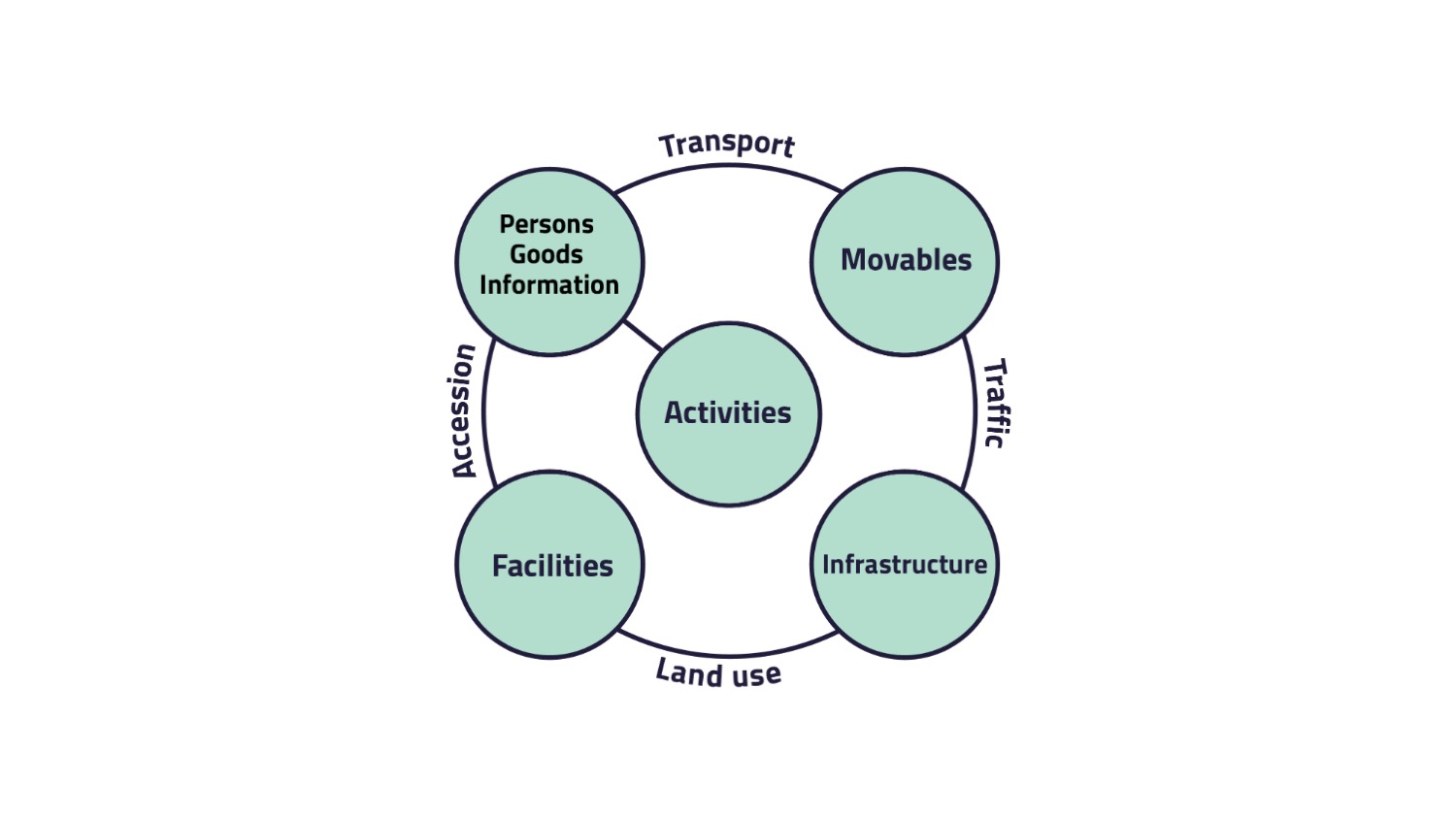Conceptual System Model of Transport and Traffic
Conceptual System Model of Transport and Traffic
Abschlussbedingungen
Anzeigen
In this section, you will learn more about the different elements and
relations of the conceptual system model of transport and traffic.
1. Introduction
This section gives you an overview of the conceptual system model of transport and traffic and helps you to understand the upcoming sections better, as their structure is based on the elements and relations presented in this section.
After learning more about the activities, that are driving the system, the persons, goods and information of the system are being presented to you. Subsequently, you learn more about the movables as well as the needed infrastructure. This topic is concluded by the facilities of the system. Besides the presentation of the elements, you will learn more about the relations between the different elements like transport, traffic, land use and accession
This framework for transportation systems analysis and design, which was developed by Ridley and Sjöstedt (1996) helps to illustrate the possibilities of different transport chains and the inherent characteristics of their elements as well as the interactions between these elements. The framework is based on a conceptual model for transportation presented by Manheim (1979).
The following figure "Conceptual system model of transport and traffic" shows the conceptual system model of transport and traffic by Flämig (2002). It consists of 5 elements (green circles) and 4 relations (lines between the circles).

The main elements of the conceptual system model are:
- Moving objects like goods, people, bytes
- Carrying objects (movables) like vessels/vehicles
- Traffic Infrastructure
- Facilities and
- Activities, that drive the system
All elements are connected via relations. The relations between the main elements are:
- Transport
- Traffic
- Land Use
- Accession
All elements and relations are explained to you in detail on the following pages of this topic.
If you want to listen to Prof. Dr.-Ing. Heike Flämig explaining the conceptual system model, you can check out the following video.
If you want to listen to Prof. Dr.-Ing. Heike Flämig explaining the conceptual system model, you can check out the following video.
Now you know of which elements and relations the conceptual system model consists.
Literature
Flämig, H.; Sjöstedt, L.; Hertel, C. (2002): Multimodal Transport: An Integrated Element for Last-Mile-Solutions? Proceedings, part 1; International Congress on Freight Transport Automation and Multimodality: Organisational and Technological Innovations
Manheim, M.L. (1979): The Challenge of Transportation Systems Analysis. In: Fundamentals of Transportation Systems Analysis, MIT Press., pp.10-49
Sjöstedt, L. (1996): A Theoretical Framework – from an Applied Engineering Perspective. In: Eurocase - Mobility, Transport and Traffic: in the perspective of growth, competitiveness, employment. Paris, France.